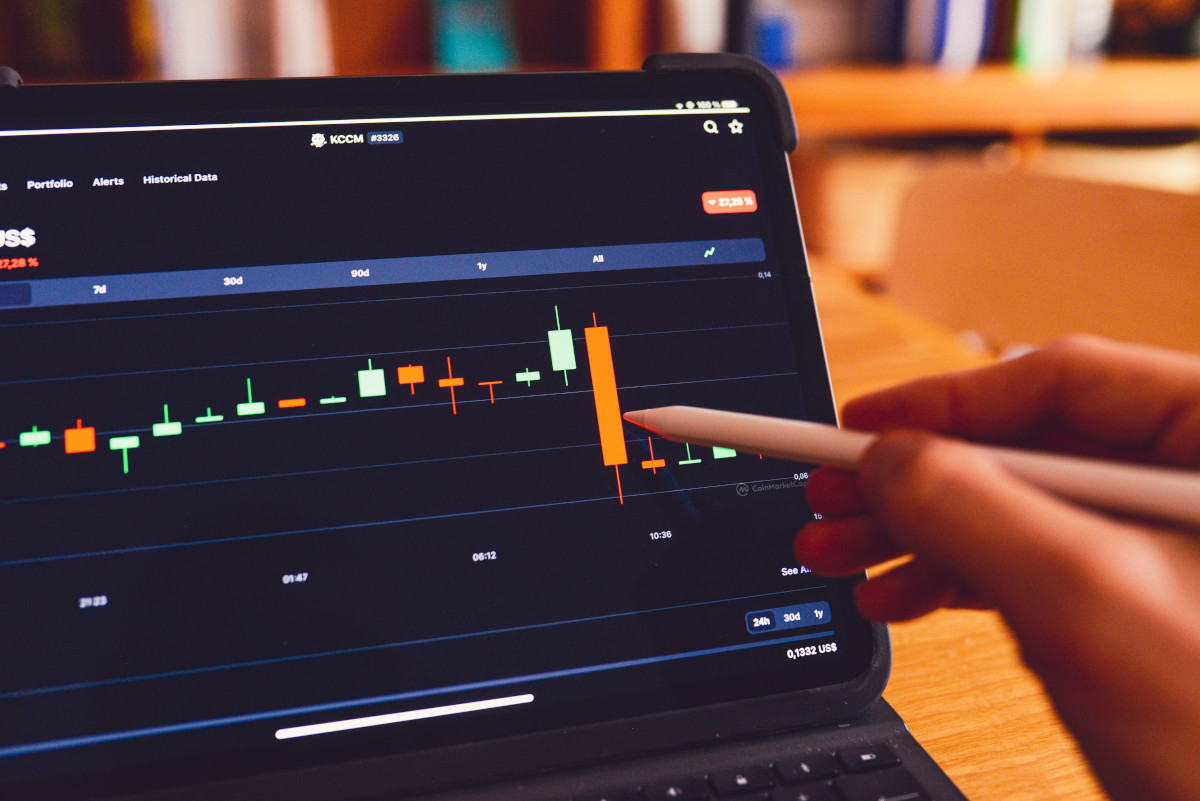Range trading strategy is often overshadowed by its more flamboyant counterparts like day trading or swing trading, but it’s a lucrative, thrilling approach to investing in its own right.
What is range trading strategy, though? It’s not about chasing the latest market craze or jumping on a bullish trend; it’s about identifying stocks playing a rhythmic dance between set price points.
Follow along as we peel back the layers of trading range strategies, delving into the core principles and offering tips on perfecting your own trading strategy. You’ll discover how its subtle, methodical approach can be surprisingly profitable – especially when leveraging a stock analysis software like VectorVest!
This swing trading tool is a game-changer in your toolkit, helping you win more trades with less work and stress. Get ready to view the stock market through a different lens, where trading range strategy becomes your stealthy weapon in navigating its twists and turns.
What is Range Trading?
First things first – what is range trading, exactly? This is a stock market strategy where traders leverage the repetitive oscillation of a stock’s price between two consistent levels. We’ll explain it in greater detail below before comparing and contrasting it against other strategies.
Definition of Trading Range Strategy
A “trading range” occurs when a stock or security consistently bounces between a low (support) and a high (resistance) price level. These levels form the boundaries of the range.
Support is the price level at which demand is thought to be strong enough to prevent the price from declining further, while resistance is the opposite – a price level where selling is thought to be strong enough to prevent the price from rising higher.
Range traders study past price movements to identify these repetitive highs and lows, using technical analysis tools such as Bollinger Bands or RSI (Relative Strength Index) to pinpoint entry and exit points within this range.
We’ll talk more about how to analyze stocks with stock market indicators and fundamental analysis later on. First, how does this strategy compare to more prominent approaches to investing?
Comparison With Other Trading Strategies
Range trading stands in contrast to several other popular trading strategies:
- Trend Following: Unlike trend traders who trade in the direction of a prevailing trend, range traders seek opportunities within the price fluctuations of a sideways market. Trend following involves identifying and following up or down market trends, which can span short, medium, or long-term periods.
- Day Trading: Day traders make multiple trades within a single trading day, seeking to capitalize on short-term market movements. Range trading, on the other hand, may involve holding positions for longer than a day, focusing on the consistent patterns of the range rather than the intraday volatility. Learn more about how to find the best stocks to day trade in our blog.
- Momentum Trading: Momentum traders focus on stocks that are moving significantly in one direction on high volume. Range traders, conversely, look for stocks that are oscillating between two price points and may not exhibit strong momentum.
You can compare other strategies in our blog. We have resources like positional trading vs swing trading, scalping vs swing trading, timing the market vs time in the market, and more. For now, let’s look a the pros and cons of range trading strategies.
Pros and Cons of Range Trading Strategies
Range trading may be less popular, but it still holds a unique position as both a strategic and calculative method. Just as with the pros and cons of swing trading, though, it’s important that you are aware of both the positives and negatives of this strategy before you implement it.
Is Range Trading Profitable?
This strategy can be profitable in stable and sideways markets – even compared to realistic swing trading returns. In these conditions, stocks tend to fluctuate within a predictable range, making it easier for traders to identify buy and sell points.
However, it’s important to set your expectations. You won’t earn as high of returns as you would with day trading, long-term trading, or other strategies. That being said, range traders do earn smaller, more predictable profits by buying at the lower end of the range (support) and selling at the upper end (resistance).
This systematic buy-low, sell-high approach can accumulate significant returns over time, especially when multiple trades are executed successfully.
Due to the repetitive nature of stock movements within a range, traders often experience a higher win rate compared to strategies relying on larger market movements. This consistency can contribute to overall profitability in the long run, even though you may be earning only a few percentage points of profit per trade.
More Reasons to Consider This Trading Strategy
Beyond the potential for profits, there are a few other reasons this is such an enticing strategy:
- Lower Volatility, Lower Risk: Compared to other strategies that thrive on market volatility, this strategy is less risky as it focuses on smaller, more consistent gains from stable stocks.
- Suitable for Beginners: Due to its reliance on defined parameters (support and resistance levels), the strategy can be more accessible for beginners, offering a structured approach to trading.
- Flexibility in Various Markets: While ideal for stable markets, it can also be adapted to more volatile conditions with proper risk management techniques.
- Opportunities in Non-Trending Markets: This strategy offers opportunities even when the market isn’t showing a clear trend, making it a valuable tool in a trader’s arsenal.
- Complements Other Strategies: It can be used in tandem with other trading strategies, providing a diversified approach to stock trading
Downsides of Range Trading Strategies
As with any trading strategy, there are risks and shortcomings to be aware of. It’s important that you weigh these against the upside and determine whether it aligns with your investment goals and risk tolerance:
- Limited Profit Potential: The gains in trading range strategies are often smaller, as traders capitalize on minor fluctuations rather than significant market moves.
- False Breakouts: A significant risk is the occurrence of false breakouts, where the price appears to break past a support or resistance level but then reverts back into the range.
- Requires Precise Timing: Success demands accurate timing and often hinges on the trader’s ability to act swiftly when buy and sell points are reached.
- Market Shifts: The strategy can be less effective in strongly trending markets, where price ranges are broken, and new highs or lows are established.
The good news is that many of these downsides can be alleviated when you empower yourself with the best stock analysis app – VectorVest. It helps you eliminate the guesswork of trading by identifying the perfect entries and exits based on a proprietary stock-rating system.
More on that later. For now, let’s look at the best range trading strategy along with some tips on implementing it.
What is the Best Range Trading Strategy?
Just as with specific swing trading strategies or market timing strategies, the approach you take to range trading will influence your time commitment, risk level, and profit potential.
So, what is the best range trading strategy? A good strategy hinges on accurately identifying the lower (support) and upper (resistance) boundaries of the trading range. Reliable identification of these levels allows traders to make precise entries and exits.
The strategy should include an analysis of market conditions to ensure that it is conducive to trading range strategies. This involves understanding whether the market is in a trend or range-bound phase.
A versatile strategy can adapt to changing market conditions, modifying parameters like the size of the trading range and the frequency of trades as needed. Below, we’ll dive into four of the best range trading strategies we’ve seen used by investors.
Bollinger Bands Strategy
Bollinger Bands are particularly useful in range-bound markets because they adapt to market volatility. The bands widen during periods of increased volatility and contract when the market is quiet, making them ideal for identifying the upper and lower boundaries of a price range.
This strategy provides clear visual cues for entry and exit points, which can be crucial for timely decision-making in range trading. Implementation is fairly simple, too:
- Set up Bollinger Bands on a price chart with a typical setting of a 20-day moving average and two standard deviation lines.
- When the price touches the lower Bollinger Band, consider it a buying opportunity, suggesting the stock is potentially oversold.
- Conversely, when the price hits the upper Bollinger Band, consider selling, as the stock might be overbought.
- Use stop-loss orders to manage risk, placing them just outside the range defined by the bands.
RSI (Relative Strength Index) Based Strategy
RSI is a momentum indicator that helps identify when a stock is overbought or oversold. In a range-bound market, these conditions often precede a reversal, making RSI valuable for timing trades.
It’s a quantifiable indicator, providing clear numerical values to guide trading decisions. Here’s how you can use it to your advantage:
- Apply the RSI indicator with a standard period of 14 days.
- Look for RSI readings below 30 as a potential buy signal, indicating oversold conditions.
- RSI readings above 70 can be considered a sell signal, suggesting overbought conditions.
- Combine RSI readings with other indicators or price action for confirmation to increase the strategy’s reliability.
Moving Average Crossover Strategy
Moving averages smooth out price data to identify the direction of the market trend. Crossovers of short-term and long-term moving averages can signal the start and end of a range-bound period.
This strategy is effective in catching the early signs of a breakout from the range, allowing traders to adjust their positions accordingly. You can learn more about the best moving average for swing trading in our blog – otherwise, here’s how you implement this strategy:
- Choose two moving averages (e.g., a 10-day and a 50-day moving average).
- In a range-bound market, look for the short-term moving average to cross above the long-term average as a buy signal.
- A sell signal is generated when the short-term moving average crosses below the long-term average.
- Be mindful of false signals; confirm with other indicators or market analysis.
Price Action Strategy
Price action focuses on the raw price movements, cutting through the noise of numerous indicators. It’s particularly effective in range trading as it allows traders to respond to direct market behavior.
Understanding price patterns like pin bars or engulfing bars at key levels can give an insight into market sentiment and potential reversals. Here’s how it works:
- Study historical price charts to identify common patterns that occur at support and resistance levels.
- Look for bullish patterns like engulfing bars near the support level as a sign to buy.
- Bearish patterns near the resistance level, like shooting stars, can indicate a selling opportunity.
- Combine pattern recognition with volume analysis for additional confirmation.
More Tips on Perfecting Your Range Trading Strategy
No matter which strategy you employ, it’s important that you take your time to learn the basics and feel confident before trading with real money. You should also incorporate risk management and other forms of stock analysis.
We’ll leave you with a few parting tips on perfecting the strategy below before wrapping up the conversation and introducing you to Vectorvest.
Practice with Paper Trading
Wait, what is paper trading? This is essentially simulated trading. It allows you to practice your strategy in real-time market conditions without risking actual capital. This practice is invaluable for testing and refining your approach.
You gain confidence in your ability to identify ranges, make trades, and learn from mistakes without the stress of real losses.
Use paper trading to experiment with different trading range strategies (like those involving Bollinger Bands or RSI) to see which works best for you in varying market conditions.
Importance of Technical Analysis in Range Trading
What is technical analysis of stocks? And, does technical analysis work? It sure does. This is crucial in defining accurate support and resistance levels in range trading. Tools like trend lines, moving averages, and price patterns help in pinpointing these critical points.
Beyond identifying ranges, technical analysis assists in determining optimal entry and exit points within those ranges, increasing the potential for profitable trades. It helps you determine the best time of the day to buy stocks along with the best time of day to sell stock.
We encourage you to learn how to do technical analysis of stocks in our blog. However, you’ll also need to know how to do fundamental analysis of stocks. So, learn about the difference between fundamental analysis and technical analysis and how to combine fundamental and technical analysis while you’re at it for a well-rounded range trading strategy.
Incorporating Economic Indicators and News
Economic indicators and news can significantly impact stock prices. Being aware of major economic events or news releases can help you anticipate potential market movements that might affect stock price.
Combine economic indicators with technical analysis for a more holistic trading approach. For instance, a strong earnings report might bolster a stock’s support level. On the other hand, negative market sentiment after a poor earnings day will send shares in the other direction.
Risk Management With Stop Losses and Take Profits
Whether you’re trying to learn how to make money trading options or you’re trading within a range, risk management is not something you can take lightly.
Implement stop losses to automatically exit a trade if the market moves against you, limiting potential losses and protecting your capital. While nobody wants to cut losses, leveraging stop losses helps you remain unemotional and prevent costly account blow-ups.
Similarly, you need to take profits when they’re there – don’t get greedy. Set take profit orders at the upper end of the trading range to lock in profits before the market potentially reverses.
Determine the risk-reward ratio for each trade to ensure that potential rewards justify the risks. A common strategy is to aim for a risk-reward ratio where the potential profit is at least twice the potential loss.
Leveraging Technology in Range Trading
As we said from the start, figuring out how to pick a stock or when to buy/sell can be simplified through our stock advisory at VectorVest. We streamline your approach to analysis through a proprietary stock rating system that eliminates human error, emotion, and guesswork.
Three ratings give you all the insights you need to make clear, calculated trades: relative value (RV), relative safety (RS), and relative timing (RT). Each sits on its own scale of 0.00-2.00 with 1.00 being the average for effortless interoperation.
But, it gets even better – because you’re presented with a clear buy, sell, or hold recommendation for any given stock at any given time. The system has outperformed the S&P 500 index by 10x over the past two decades and counting, so you can trust its recommendations.
Plus, you never have to wonder how to find options to trade or how to find range trade stocks again. Our stock screeners work around the clock to bring the best opportunities to your phone or desktop on a daily basis.
Whether you’re looking to fine-tune your swing trading stock selection, seeking out beginner stocks to buy, or trying to buy the dip, VectorVest can help. It’s considered the best swing trading alert service, and it can be an invaluable part of your range trading strategy.
Get a free stock analysis today and experience the difference firsthand!
Final Thoughts on the Best Range Trading Strategy
That concludes our detailed guide to the best range trading strategy. This is a strategic approach in the stock market that thrives on identifying and capitalizing on price movements within a defined range.
Its benefits include lower risk and suitability for various market conditions, leveraging methods like Bollinger Bands, RSI, and technical analysis. Effective trading range strategies hinge on precise market insights, technical proficiency, and robust risk management. This is where VectorVest comes in to provide invaluable assistance.
You can learn more in our blog. We have resources on swing trading time frames, swing trading patterns, why you don’t need a financial advisor, should I buy stocks when they are low or high, can you sell stock after hours, swing trading for beginners, swing trading for a living, and more.
Otherwise, it’s time to find out for yourself how the best platform for swing trading can elevate your trading range strategy to new heights. Embrace the art of range trading strategies with the right tools at your fingertips today!








Leave A Comment